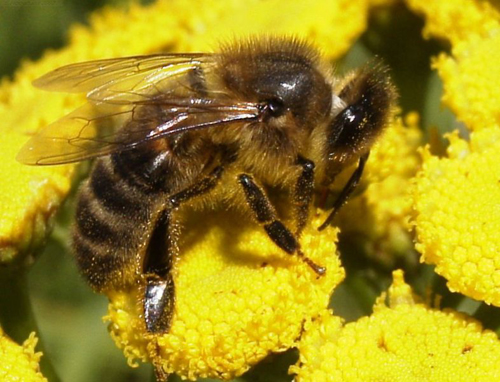TWO SCOTTISH islands are to become the UK’s first official honeybee nature reserves after a landmark ruling by ministers.
There are around 250 native species of bee in Britain but only one that’s farmed for honey.
The isles of Colonsay and Oronsay are currently home to 50 colonies of the Apis mellifera mellifera but a new ruling will make it illegal to farm any other honeybee.

Campaigners have been calling for the islands to be named official reserves for years after the two locations were chosen for a pilot breeding station in 1941.
The bug, otherwise known as the black bee is renowned for its hardy ability to survive Scottish weather but has been blighted by disease and cross-breeding in the past.
But now breeders across the country are welcoming The Bee Keeping (Colonsay and Oronsay) Order 2013, which will take effect in January next year.
Beekeeper Andrew Abrahams, who has been farming the bug on Colonsay for the last 35 years, led the campaign and has now welcomed the news.

Mr Abrahams said: “It’s the government’s acknowledgement that native bees should be conserved because they are much more suitable to our difficult environment, and the increasingly difficult environment global warming will bring us.”
Eric McArthur, vice president of Glasgow and District Beekeepers’ Association has said these islands will now hold the same importance for beekeeping as Australia’s Kangaroo Island has.
Kangaroo Island, south of Adelaide, is a reserve for an Italian species of the honeybee and is believed to be the last pure stock of the species anywhere in the world.
Mr McArthur said: “The honey bees on Colonsay and Oronsay have the same significance for future Apis mellifera mellifera genetic purity as Kangaroo Island has for Apis mellifera ligustica.
“These islands will become a Mecca not only for worldwide beekeepers interested in seeing the pure Apis mellifera mellifera for themselves but also for scientists investigating the limits of genetic diversity in any closed and isolated population.”
He added that the new reserves could also benefit Scotland’s economy and should become Centre’s of Excellence.

Environment and climate change minister, Paul Wheelan, says the news reserves will ensure a bright future for black bees on the islands.
He said the order is a “targeted measure” to protect the important population from breeding with non-native honeybees, keeping them genetically pure.
Most of Britain’s native honeybees were wiped out in the early 20th century by the ‘Isle of Wight disease’ which is caused by a parasitic mite.
Only a few survived and they were then used to set up the apiaries by Abrahams in 1978.
Currently the biggest threat to the bug is the deadly Varroa mite, which was first discovered in the UK in 1992 where virtual elimination of feral bee colonies took place.
Colonsay was chosen for the pilot scheme initially because its bees are free from the disease and are therefore genetically pure.
The Apis mellifera mellifera, otherwise known as the black honeybee, is the UK’s only indigenous honeybee and is known for being thrifty with food stores and are able to survive low temperatures and high winds.

